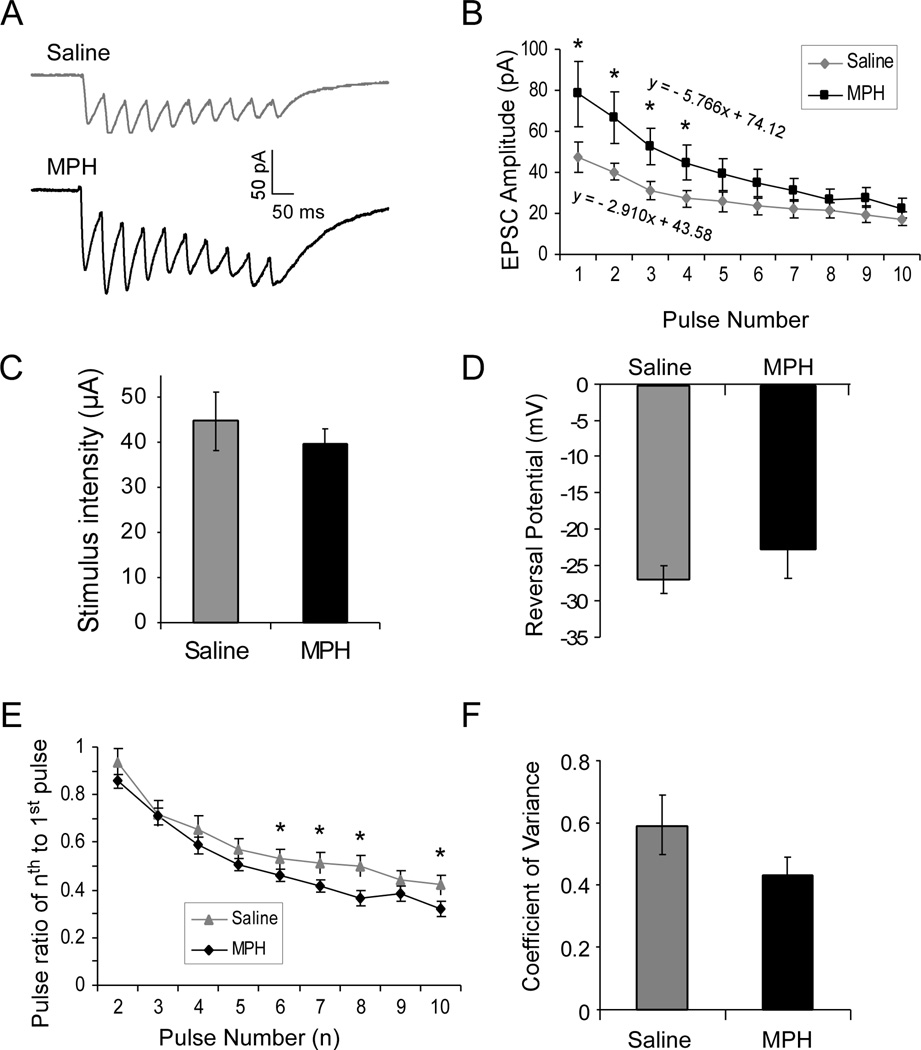Figure 2.
The evoked AMPA receptor-mediated current was significantly increased by MPH treatment. A, Representative traces from saline controls and MPH-treated neurons. B, MPH treatment significantly changed the pattern of short-term depression of AMPA receptor-mediated currents (n = 7 for saline and 7 for MPH, ANOVA F = 4.41, p < 0.05) with the first several EPSCs significantly greater than those in saline controls (* p < 0.05). C, Stimulus intensities applied to evoked EPSCs were not different between saline-and MPH-treated neurons (44.8 ± 6.42 µA for saline vs. 39.84 ± 3.13 µA for MPH; n = 7 cells for each group, p > 0.05). D, The reversal potentials of AMPA receptor-mediated EPSCs in saline- and MPH-treated neurons were also similar, without statistical significance (n = 9 cells, 4 rats for saline, 8 cells, 4 rats for MPH, p > 0.05). E, MPH treatment decreased paired-pulse ratio of successive AMPA receptor-mediated EPSCs in a train overall (ANOVA F = 4.413, p < 0.01) but ad hoc t-test exhibited statistical significances only in the last several EPSCs (* p < 0.05), indicating an altered short-term synaptic plasticity. F, Coefficient of variance was not significantly altered by MPH treatment (p = 0.096).

